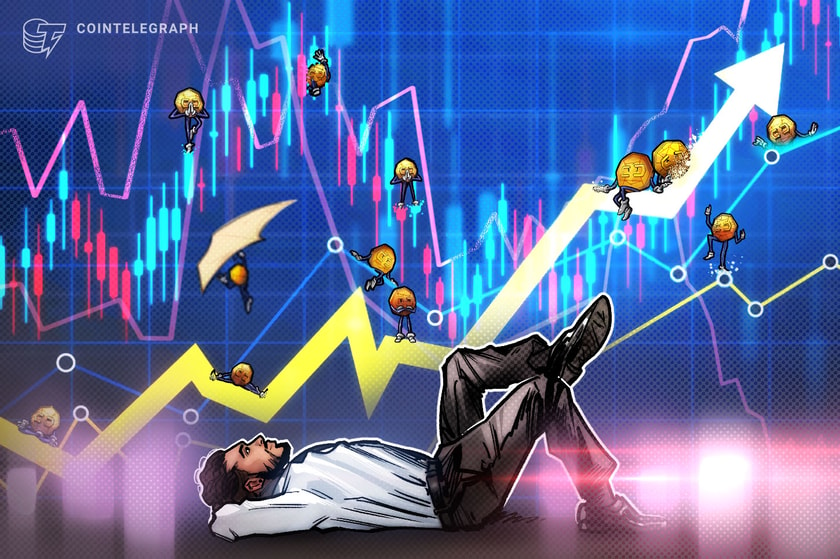Where next for Bitcoin price? BTC continues to stagnate below $18K
Throughout the past few days, the sell-side pressure from all sides has intensified. Bitcoin miners have sold their holdings at a scale unseen for over three years. On top of this, the inflow of whale-associated BTC into exchanges has substantially spiked. The combination of the two data points indicates that miners and whales have been selling in tandem.
Bitcoin continues to trade under $18,000 following a week of aggressive selling from whales, miners and, possibly, institutions. Analysts generally believe that the $19,000 region was a logical area for investors to take profit, and as such, a pullback was healthy. Heading into the latter part of December, price analysts expect the downside of Bitcoin (BTC) to be limited and a gradual uptrend to follow.

The recovery of the U.S. dollar has been another potential catalyst that could have contributed to Bitcoin’s short-term correction. After a multimonth pullback, the U.S. dollar index (DXY) rebounded. The dollar’s recovery could have been propelled by the news of Pfizer’s impending vaccine distribution and the prospect of a widespread economic rebound in 2021. When the value of the U.S. dollar increases, alternative stores of value such as Bitcoin and gold drop.
Although the confluence of the rising dollar, whale inflows and a heightened level of selling from miners likely caused the Bitcoin price drop, some believe that the probability of a stable Bitcoin uptrend still remains high.

Downside is limited, and outlook for December remains bright
Speaking to Cointelegraph, Denis Vinokourov, head of research at crypto exchange and broker BeQuant, said that the selling pressure on Bitcoin might have derived from two additional sources. First, Wrapped Bitcoin (WBTC) was burned throughout this week, which meant that BTC used in the decentralized finance ecosystem was sold. Second, hedging flow in the options market added more short-term sell-side pressure.
Considering that unexpected external factors likely pushed the price of Bitcoin lower, Vinokourov expects the downside to be limited in the near term. He also emphasized that the uncertainty around Brexit and the U.S. stimulus would eventually affect Bitcoin in a positive way, as the appetite for risk-on assets and alternative stores of value may be restored:
“The uncertainty over Brexit and a stimulus plan in the US may prove disruptive, at first, but eventually be a net-positive. As such, expect downside to be limited and stability to resume.”
Guy Hirsch, managing director of the United States at eToro, told Cointelegraph that Bitcoin has seen a sell-off from all sides throughout the past several days. But with Bitcoin performing strongly in December, based on historical bull cycles, he anticipates buyers to accumulate BTC during major dips.
In 2017, for instance, Bitcoin saw high volatility and turbulence approaching the year’s end. But in late December, the dominant cryptocurrency saw an explosive move upward, reaching an all-time high near $20,000. Bitcoin has since topped that figure but has failed to stay above it. If the selling pressure on BTC decreases in the upcoming weeks, BTC could be on track to close the year on a high note, according to Hirsch:
“Bitcoin has undergone a bit of selling pressure from all sides but long-term outlook is still extremely bullish. We may see a bit more of a drop heading into the end of the year, but many investors see these dips as buying opportunities and are likely keeping Bitcoin from correcting as dramatically as the last time it rose above $19,000 back in December 2017.”
Positive institutional sentiment is vital
In recent months, institutions have accumulated large amounts of Bitcoin. Most recently, MassMutual, the life insurance giant, purchased $100 million worth of BTC. These purchases from institutional investors represent direct buyer demand for Bitcoin. But more important than that, they create a precedent and encourages other institutions to follow suit.
Based on the ongoing trend of institutions allocating a fraction of their portfolios to Bitcoin, this implies that such accumulation may continue throughout the medium term. If so, Hirsch further noted that institutions would likely look to buy the Bitcoin dip in the near term. According to him, the firms are “taking advantage of this temporary stagnation to stockpile an asset that many see trading at a discount,” and when that happens, the price of BTC could respond positively:
“We are seeing a raft of announcements from firms all around the world, either announcing plans to start trading or HODLing Bitcoin, or disclosing they already have — Guggenheim, Standard Chartered, Fidelity, Microstrategy, PayPal, Square, the list goes on.”
What is expected of BTC in the near term?
Some technical analysts say that the price of Bitcoin is in a relatively straightforward price range between $17,800 and $18,500. A break above $18,500 would signify a bullish short-term breakout and set up BTC for a continued rally. However, another drop to below $17,800 would indicate that a short-term bearish trend could emerge.
In the near term, Bitcoin generally faces five crucial technical levels: $17,000, $17,800, $18,500, $19,400 and $20,000. For BTC to avoid a drop to the $16,000 region, staying above $17,800 with a relatively high trading volume is critical. If BTC aims to set a new all-time high entering January 2021, consolidating above the $19,400 resistance level will be key.
Bitcoin also faces a short-term risk as the U.S. stock market began to pull back in a minor profit-taking correction. The Dow Jones Industrial Average has continuously rallied since late October due to favorable financial conditions and liquidity injections from the central bank. If the risk-on appetite of investors declines, Bitcoin could stagnate for as long as the U.S. stock market struggles.
Whether Bitcoin could see a parabolic uptrend in the foreseeable future, so soon after a powerful four-fold rally from March to December, remains unclear. However, Hirsch believes that it makes sense for Bitcoin to be “significantly higher” than now within the next 12 months. He pinpointed the rapid increase in institutional adoption and the possibility of Bitcoin price following, stating: “All one needs to do is look at a classic adoption curve to see where we are now and, should adoption continue as expected, we still have a long way to go before reaching saturation — and Bitcoin’s fair value.”









